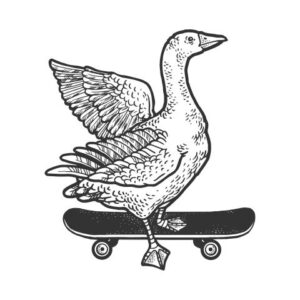Sometimes it isn’t easy to know what everything is called or what even is skateable as a beginner. Even some more experienced skaters might forget the other name for a pyramid is a fun box.
Luckily, I put together a pretty solid list of the main obstacles you’ll find at the skate park and go over which are beginner-friendly. I also mention if the obstacles are common or uncommon and whether they’re only found at a skatepark or not.
So let’s get started.
Skateboarding Obstacles
Quarter Pipe
Quarterpipes are quite literally a quarter of a pipe. Every skatepark will have one or most likely a few and they are often used to gain speed towards obstacles. You can do any trick you might otherwise do in a bowl or halfpipe on the quarter pipe and they are perfect to start learning transition on.
As a beginner, I would recommend simply riding up and back down switch. Switch means that your dominant foot is in the front and is the position you don’t normally ride in. You can also begin working on your kick turns, rock-and-rolls, and rock-to-fakies with a quarterpipe.
Quarter pipes can be a cool DIY build as well, but I have yet to make one myself. Hopefully, this fall I can get the times and tools together to make it happen.

Half Pipe
Do you know Tony Hawk?
Halfpipes are quite literally half of a full pipe with the top half being missing. They are what many people think of when they think of skateboarding especially if they’re thinking of Tony Hawk. These aren’t in every skatepark especially if the park is a street-style park, but are still pretty prevalent.
Halfpipes can be very large up to 20 feet tall or rather small which many people call minis. If you’re going to learn then learn on a mini. I learned to rock and roll on a tiny mini so falling didn’t hurt so much. Falls in concrete bowls or halfpipes are especially dangerous as you are high in the air and you have a good chance to fall backward. When you fall backward, you’re likely going to hit your head.
If you are skating a halfpipe, wear a helmet. It doesn’t matter how experienced you are and how you see pros skating with no helmet. Things can happen and it could effectively end your life.
So please, stay away from these until you’re comfortable with a board. Start on a mini halfpipe to build some chops first.

If you are interested in how often you should practice to improve your skateboarding, check out our data-driven guide here.
Full Pipe
A full pipe is a very elusive skate element.
A full pipe is exactly as the name implies. It is a full 360-degree pipe or tunnel, you can skate through and ride up along the walls. These are really cool to skate through but are pretty rare to find. They require a lot of concrete to build and you need to create something quite large to even be skateable.
They are also restrictive in how you can skate it because airs or lip tricks are out of the question. These are the reasons they are uncommon. It’s just not an economical use of material and space and skate parks have size and budget restrictions.
Rails
Rails come in a lot of different varieties and shapes. All the rails in skateparks will be skateable, but not so much in street spots. Rails can be on platforms, along with stair sets, and simply stand-alone obstacles. The rails themselves can be round or flat and kinked or straight.
Often the simplest rail will be a simple grind rail that sits about a foot off the ground and can be moved around. These are the best to learn simple grinds on and you can easily purchase one for your own from Amazon or other online retailers. Most skate shops won’t have these in stock as they’re too bulky.
Flat Bar and Flat Rail
Some rails are easier to grind than others.
The word “flat” here refers to the shape of the rail itself. A flat rail has a box or rectangular shape which gives you a flat surface to balance upon while you’re grinding the rail. This type of rail is considered the easiest type of rail to skate and you can commonly find these in the skate park.
Round Rail
Can you guess what a round rail is?
The word “round” here refers to the rail’s shape. Instead of a flat rail, the rail shape is round which is considered slightly more difficult to skate than a flat rail. These types of rails are more common in street spots and you can purchase a simple grind rail with a round shape. You will inevitably grind round rails if you grind at all.
Honestly, the difference in the level of difficulty between flat rails and round rails isn’t so big. While kinked rails definitely are harder, round or flat rails are pretty similar to skate.
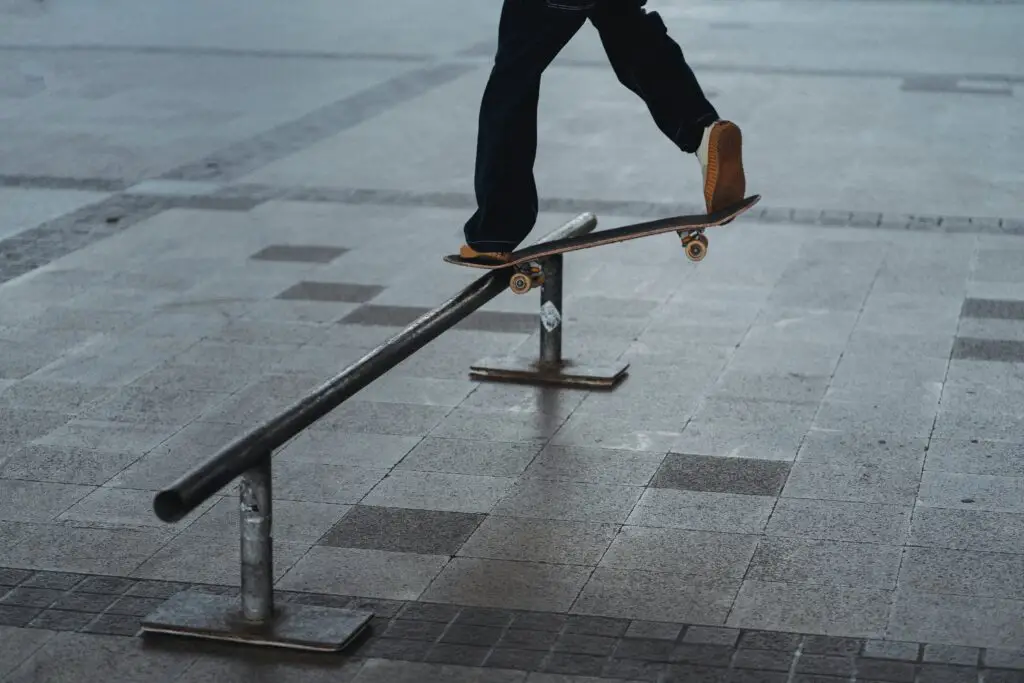
Kinked Rail
This is the daddy of all rails.
A kinked rail refers to a rail that changes direction suddenly in the middle. These rails are considered the hardest to grind and with good reason. Keeping your balance as a rail suddenly drops or levels out is quite a feat. A skatepark may or may not have a kinked rail. They are somewhat rare, but you can absolutely find them in street spots.
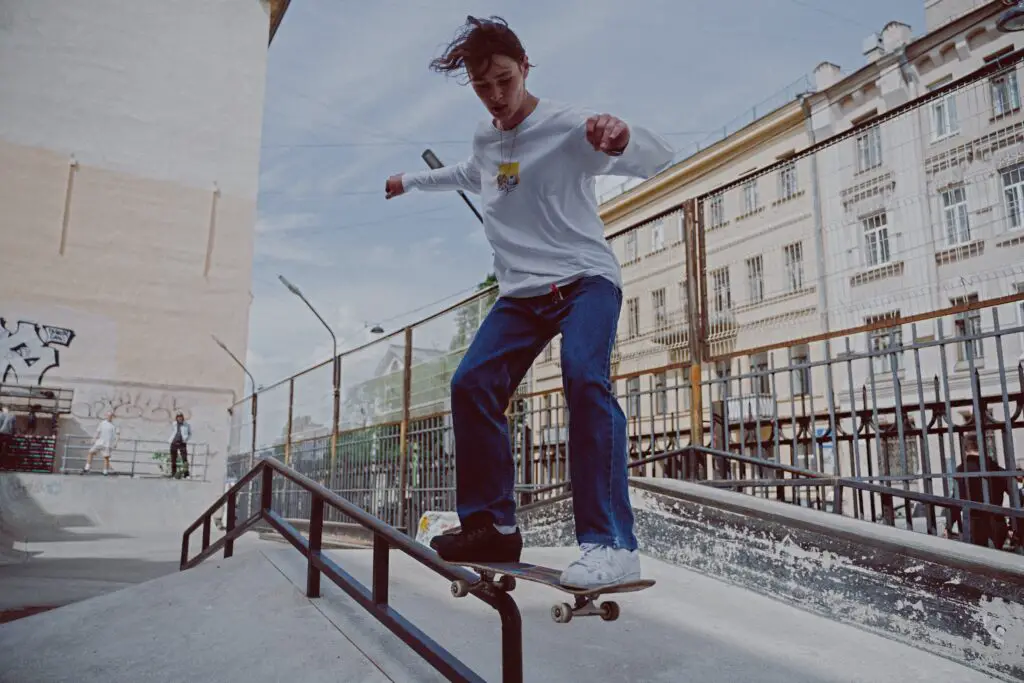
Hand Rail
Where do you put your hand when you walk down the stairs?
A handrail refers to a rail that is alongside a stair set. They are always inclined to match the slope of the stairs and can either have a round or flat shape. These rails can also be kinked or straight. The defining feature isn’t the rail itself, but the stairs alongside it.
These rails are scary because if you fall it will hurt and it’s easy to get seriously injured. Believe it or not, falling onto stairs is not something that will feel good. Personally, I would advise you to stay away from handrails until you’re very comfortable grinding down rails. Then start with short and small handrails.
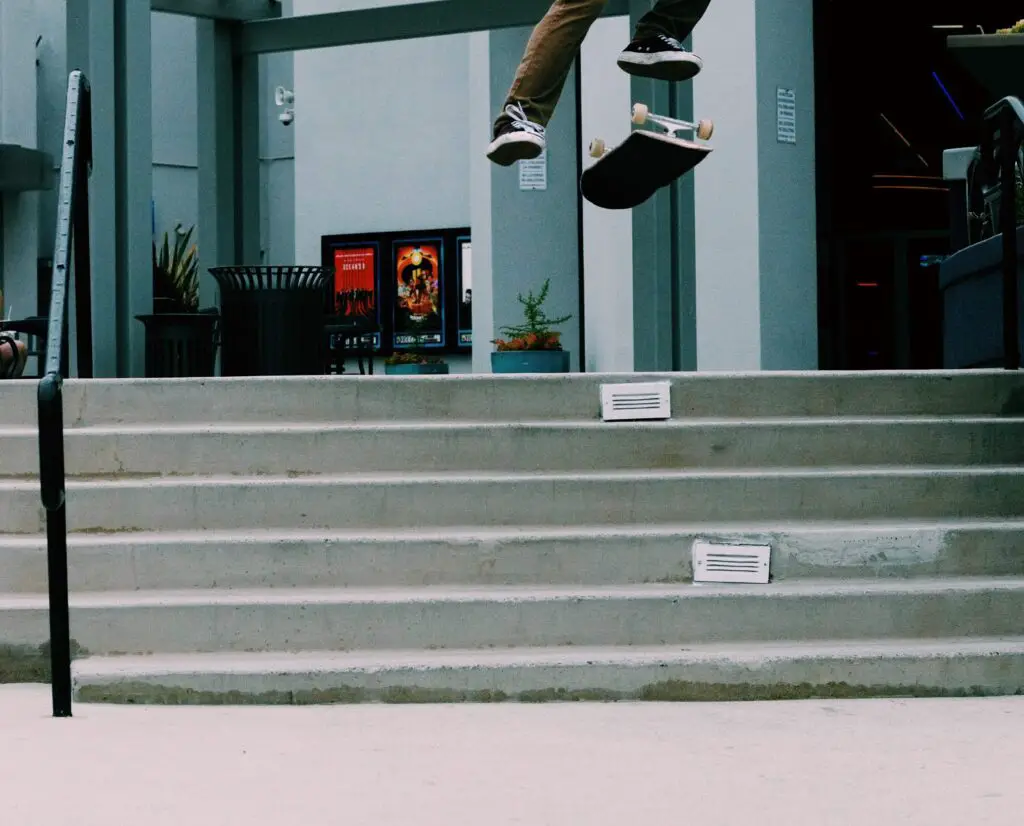
Stairs
Stairs are notorious for street skating and most skateparks feature at least a small stair set. Usually, a street-style park will feature a stair set or two. Most likely one 3-stair set and one 5-stair set. There also might be a down rail alongside the stairs to grind.
If you can’t ollie then I would stay away from the stairs and even if you can ollie you should start off on a small two-step or three-step set before trying anything bigger. You likely won’t be skating stairs if you are a beginner even if you can ollie. At this point, getting comfortable is the most important thing to work on.
If you’re having confidence issues as most people do, then you can practice just rolling off of a two-step or three-step stair set with no ollie. Just get enough speed and keep the board level by putting weight on the back tail.
As a last additional note, tricks over or off of stairs look great. I want to kickflip a 5-stair, but I never have. Maybe soon.
Manual Pad
Despite the name, you aren’t required to do a manual on the manual pad.
A manual pad refers to a small elevated platform that you can ollie onto and off of. It is referred to as a manual pad because it’s common to ollie into a manual and these platforms are usually very low to the ground. A manual pad might also have a metal-capped edge meant to be grinded.
These are great obstacles for beginners as they are easy to skate and can help you build confidence. Doing an ollie off of a manual pad or a curb is the first step to doing an ollie off of a stair set. Most skateparks will have some sort of manual pad and you can find these naturally in parking lots as sidewalks as almost manual pads anyway.

Kicker or Jump Ramp
Do you want to get some air without learning to skate transition?
A kicker or a jump ramp is simply a little inclined ramp meant to help give you air to do tricks off of. You can simply kickturn the kicker and use it to turn around as well. Often you’ll find two kickers facing each other with a gap in between so you can do a trick over the gap into the second kicker.
Skate parks will also often have a moveable kicker that you can position in whatever way you want and people can get quite creative. If you own any skate obstacle, you probably own a kicker or a grind rail.

Ledge
This one is pretty simple.
A ledge is an elongated block with metal capped edges that are meant to be grinded. These are commonly found in the skatepark and are often incorporated into other skate obstacles. Ledges are also very common to find in the city in street spots.
You can do all sorts of tricks off of a ledge, but most people just do flat-ground tricks. Ledges are simple and fun. Find a small one to skate if you are a beginner. Rolling your ankle off of a ledge will take months to recover from.
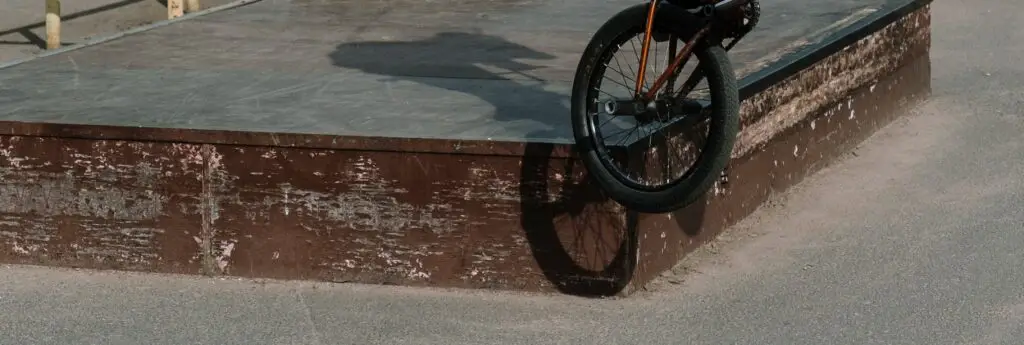
Bank
A bank is just an inclined slope that people ride up, do a flat ground or foot plant variant trick, and then ride back down. A bank can have a “hip” which means there is a corner where two banks meet. Most parks will have at least one bank to skate and you can find tons of banks naturally in street spots across most cities.
Doing tricks on a hip is difficult, but looks super cool.
I’m not sure why it’s named bank, but maybe it’s because of the term “bank of the river” which means sloped sides that lead to the river. Maybe incline or slope is literally its definition. I don’t know and I’m not a linguist.
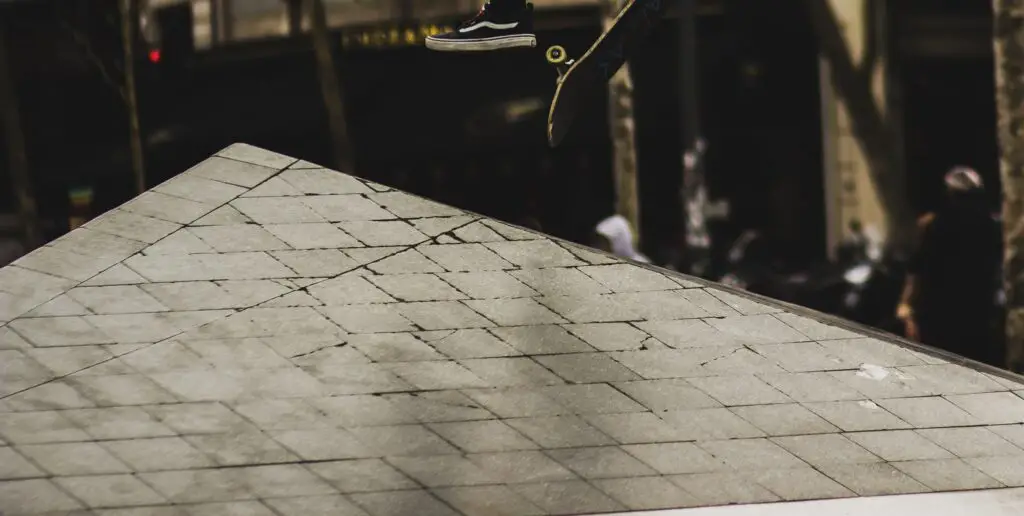
Bowl
Bowls are found in some fashion at almost every skatepark nowadays. If the park doesn’t have a bowl, it usually has a halfpipe.
The bowl can be as shallow as 5-7 feet or as deep as 15-20 feet deep. They are often made of concrete for outdoor parks and sometimes wood for indoor parks. Dropping in and carving these are immensely fun and are the ideal way to skate for older skaters because there isn’t much stress on your body.
Definitely get comfortable on your board first before you try and skate a bowl, and stay out of a bowl if you aren’t skating it. A bowl is very dangerous for everyone involved if you block a skater’s path.
If you skate a bowl, wear a helmet. It doesn’t matter how experienced you are or that pro’s sometimes don’t wear them. Things happen. You don’t want to get a gnarly concussion and lose time at work or your job, or even some mental ability.
Bowl skating is considered transition skating and it totally different compared to street skating and requires a completely different skill set. You can find skaters who are amazing freestyle or street skaters who aren’t comfortable doing a slash grind in a bowl.
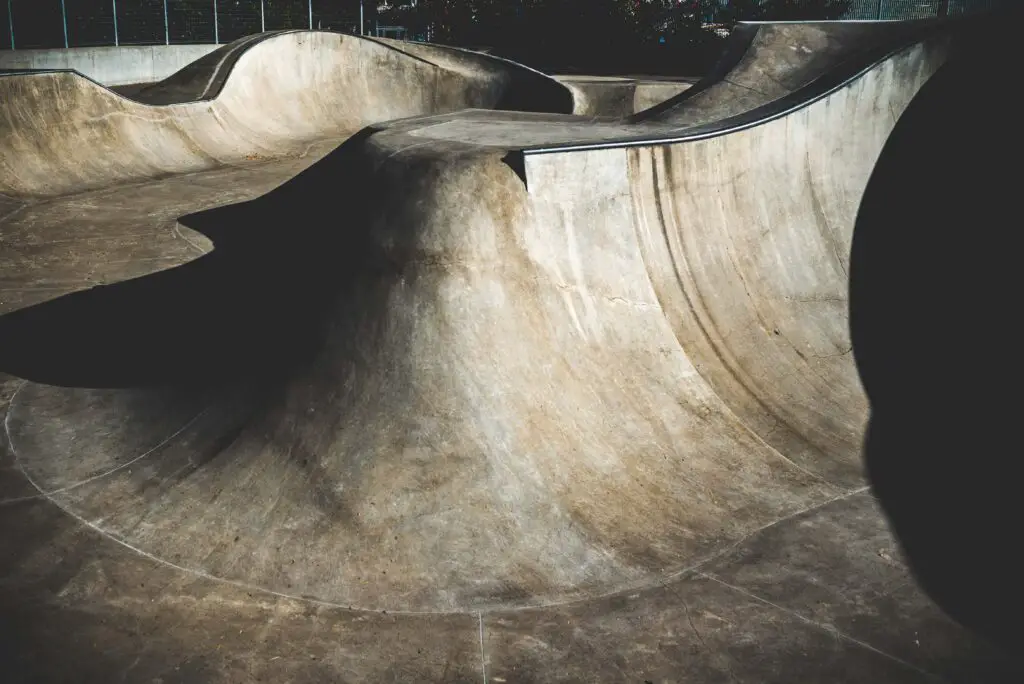
Fun Box or Pyramid
A fun box, or skate pyramid, is a weird design that was created specifically with skating in mind.
A fun box is basically a hybrid of a manual pad and at least 2 ramps or banks. The fun box will have a flat area on the top. Often the fun box will include different elements such as handrails or quarter pipes to increase the combinations of tricks that can be performed.
Fun boxes are pretty common for skate parks, but you’ll virtually never find a natural one in a street spot. They are designed specifically for skateboarding.
Gap
A gap refers to a drop-off between two skateable obstacles. The empty space between the roofs of two buildings could be considered a gap for instance.
Gaps are cool and are used in most street skate parts. Most skateparks will have some sort of gap to skate. Usually, it will be two kickers with a space in the middle. Nothing is so satisfying as jumping or doing a trick over a gap. It feels better than doing a trick over a raised obstacle in my opinion.
You need to be comfortable at least with ollies before trying to skate any gaps.

Additional Questions
Can you DIY skateboard obstacles?
Most cities will have at least one small DIY skate spot. Often skaters had to DIY a lot of their own spots as cities used to run them out and not have any skate parks.
DIY skateboard obstacles are fun to make and can require a bit of creativity. Often some abandoned or run-down urban spots need to be changed to be skateable. Typically this means cleaning the area up, laying some concrete, or even just throwing some plywood down.
You can also fully make any of the skate obstacles mentioned with some tools and the proper materials. These are awesome DIY projects that will be very rewarding as you will create your own place to skate. If you have the space and extra cash, go for it!
There are plenty of great tutorials available on YouTube.
If you are interested in how long it takes to learn an ollie, check out our guide on how long it takes using poll data.
Conclusion
So there you have it. That’s a more or less complete list of skateboarding obstacles you’ll find at the skatepark and in any street spot. Some are easier for beginners than others. If you are a beginner, try and stick to manual pads, kickers, simple grind rails, and mini ramps. Otherwise, go wild.
Sometimes it’s fun to skate something other than flat ground. Unless you’re a freestyle God like Rodney Mullen or Andy Anderson, then try to skate some basic obstacles. It will open up the world of skating and allow you to do much more creative tricks and lines.
Anyway, thanks for reading, and look out for more articles from Board and Wheels.
